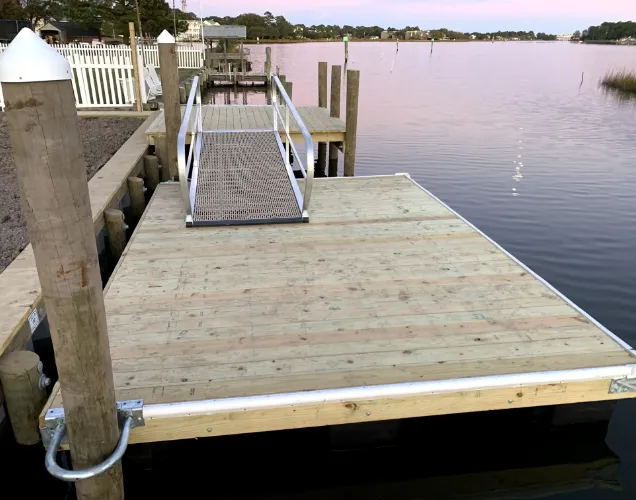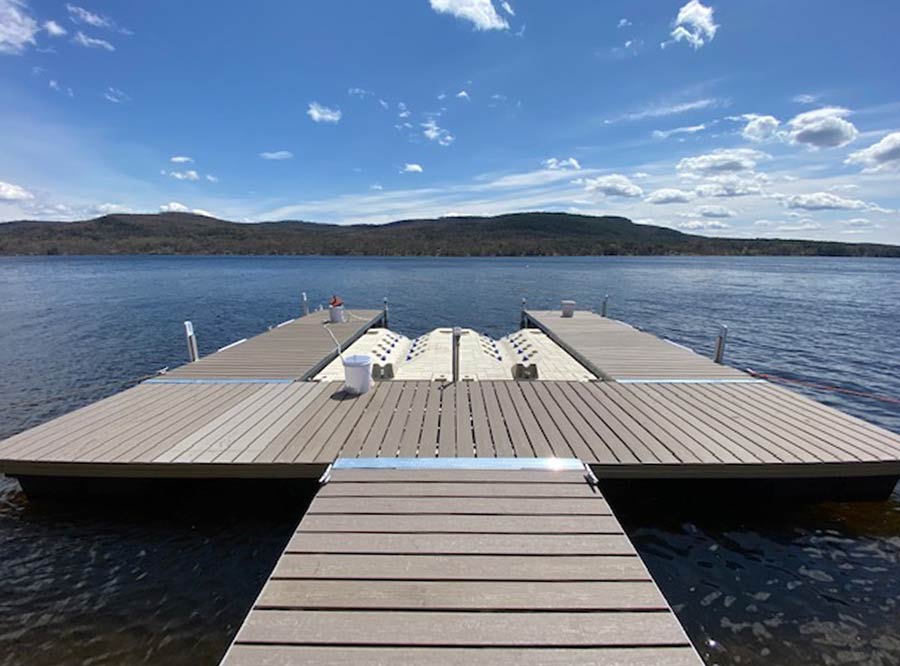Discover the Variety Of Floating Dock Services Designed to Suit Every Sailor's Demands
Discover the Variety Of Floating Dock Services Designed to Suit Every Sailor's Demands
Blog Article
Create the Perfect Docking Solution With Floating Docks
Floating docks existing a versatile option for a range of maritime requirements, adjusting effortlessly to fluctuating water degrees and varied vessel kinds. Their modular nature allows for fast installation and relocation, yet the selection of suitable products and style features is essential for making certain both functionality and aesthetic allure. As we discover the necessary elements that contribute to the effectiveness of floating docks, several key elements relating to stability and maintenance will certainly emerge, increasing concerns about just how to optimize your docking experience. The succeeding conversation will illuminate these important considerations.

Advantages of Floating Docks
Floating docks offer various advantages that make them a perfect choice for different maritime applications. One of the primary benefits is their flexibility to altering water levels. Unlike fixed docks, floating docks increase and autumn with the trend, ensuring constant availability for vessels. This function is especially vital in areas vulnerable to considerable tidal variations or seasonal water degree adjustments.
In addition, floating docks are normally much easier and quicker to set up compared to typical set frameworks. Their modular layout enables for straightforward setting up and disassembly, assisting in maintenance and relocation when required. This versatility is particularly advantageous for short-lived applications or in environments where conditions may transform.
Floating docks also have a tendency to be extra eco-friendly, as they decrease disruption to the seabed and bordering water environments. Their resilient nature minimizes the danger of damages to aquatic life, promoting a healthier environment. These docks can be customized to suit numerous vessel dimensions, ensuring that they fulfill specific operational needs.
Ultimately, the combination of flexibility, simplicity of setup, and ecological factors to consider makes floating docks a very reliable option for a wide variety of maritime needs.
Picking the Right Products
Picking the ideal products for floating docks is crucial to make sure durability, longevity, and stability. The choice of materials straight impacts the dock's efficiency in various environmental problems, consisting of exposure to water, sunshine, and possible wear from aquatic traffic.
Typical materials utilized for floating docks include aluminum, wood, and high-density polyethylene (HDPE) Light weight aluminum is lightweight, corrosion-resistant, and requires very little maintenance, making it an exceptional choice for longevity. Nonetheless, its preliminary expense can be greater contrasted to other products.
Wood, while visually enticing and providing a traditional appearance, can be susceptible to rot and bug damages if not properly dealt with. Using pressure-treated wood or normally resilient varieties like cedar or redwood can mitigate these issues.
HDPE is a popular selection because of its resistance to UV rays and chemicals, in addition to being eco-friendly. floating dock services. It is lightweight and offered in different colors, permitting for customization
Inevitably, the ideal material option will certainly depend on certain demands, including budget plan, desired visual appeals, and environmental factors to consider. Cautious assessment of these elements will bring about a effective and resistant floating dock option.
Layout Factors To Consider for Security
When creating floating docks, making sure stability is a basic facet that can substantially impact their capability and security. Security in floating dock style is affected by various factors, including buoyancy, weight distribution, and the plan of components.
Weight circulation is crucial; equally distributing loads across the dock stops turning and enhances stability. This can be achieved via critical positioning of docking devices, such as cleats and fenders, along with appropriate spacing of drifts. In addition, the dimensions of the dock must be thoughtfully planned. Wider designs can offer increased security, especially in harsh water problems, while longer docks may call for added supports to avoid sagging.
An additional vital factor to consider is the environmental influence, including wave activity and wind. Integrating attributes such as sidewalls or skirting can help reduce the impacts of ecological forces, keeping stability in unfavorable conditions. Inevitably, a mix of thoughtful layout, product option, and understanding of ecological variables will certainly produce a floating dock that satisfies both stability and security needs.
Installment Tips and Strategies

Following, protect the necessary authorizations and follow neighborhood policies, which might determine installation methods and ecological considerations. Involve a qualified contractor experienced in floating dock setups if needed. Usage top quality products created for marine settings to boost toughness and long life.
When positioning the dock, align it alongside the shoreline to help with simple gain access to. Make sure that the anchoring system is robust, utilizing concrete blocks or helical anchors to maintain the dock against wind and wave action. It's essential to account for seasonal water level fluctuations, consisting of prospective ice movement in colder climates.
During the installation, double-check the dock's floatation and stability before finalizing the anchoring. Routinely evaluate the installation for any kind of indicators of wear or damage. By following these techniques and suggestions, you can accomplish a protected, useful, and cosmetically pleasing floating dock installment that satisfies your needs.
Upkeep and Care Guidelines
Keeping and caring for floating docks is vital to lengthening their life-span and ensuring risk-free usage. Regular examinations must be conducted to determine any indicators of wear, damage, or marine development. Look for splits, loose fittings, or discolored locations on find this the dock's surface area, as these problems can jeopardize architectural honesty.
Cleansing is vital. Make use of a stress washing machine to eliminate algae, barnacles, and particles, which can gather in time. For stubborn growth, consider eco-friendly cleaner that will not hurt marine life.
Additionally, examine the mooring lines and supports frequently to ensure they are complimentary and secure from rust. Change any type of frayed or harmed lines promptly to preserve stability.
During severe weather, such as storms or freezing problems, take precautionary steps. Secure the dock with extra mooring lines and, if possible, eliminate any removable components to stop damage.
Verdict
Finally, the execution of floating docks offers a reliable and functional docking remedy suitable for various maritime applications. Their versatility to fluctuating water levels, incorporated with a modular style, permits for simple modification and relocation. Selecting proper materials boosts both resilience and aesthetic charm, while mindful consideration of security ensures safety and security and long life. With proper installation and regular maintenance, floating docks can offer trusted and reliable docking experiences for a wide variety of vessels.
As we check out the essential components that contribute to the efficiency of floating docks, several crucial factors concerning stability and maintenance will certainly arise, raising concerns concerning just how to maximize your docking experience. Unlike fixed docks, floating docks rise and loss with the trend, guaranteeing constant accessibility for vessels.When developing floating docks, making sure stability is a basic element that can considerably impact their performance and safety and security. Stability in floating dock style is influenced by different elements, consisting of buoyancy, weight distribution, click for more and the setup of parts. Inevitably, a combination of thoughtful layout, product selection, and understanding of environmental variables will generate a floating dock that meets both security and safety and security requirements.
Report this page